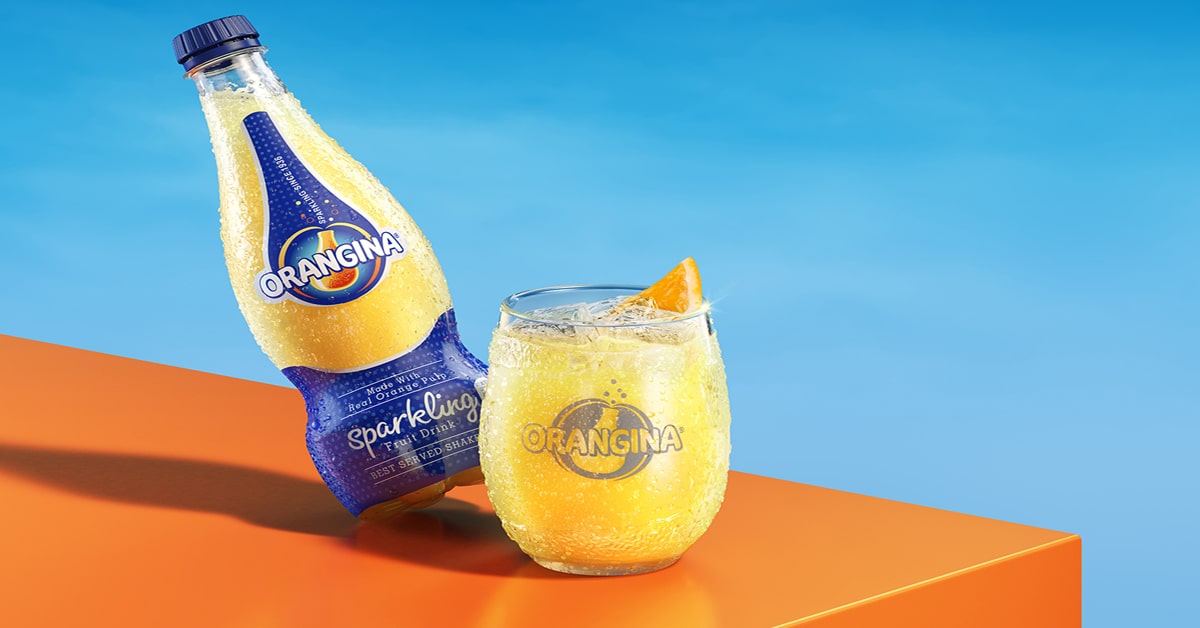Orangina (History, Flavors Marketing & Commercials)
If you love a classic orange drink, then you simply can’t go wrong with Orangina. This European-based company created a drink that was perfectly orange, perfectly citrusy, and perfectly flavored. If you’re familiar with the US orange drink Sunny Delight, this is a similar concept but it’s even more unique and has stunning differences too.
Check out the guide below to learn more about Orangina and what they have to offer.
Please leave a review or any memories of this snack in the comments at the bottom of this page. Thank you!
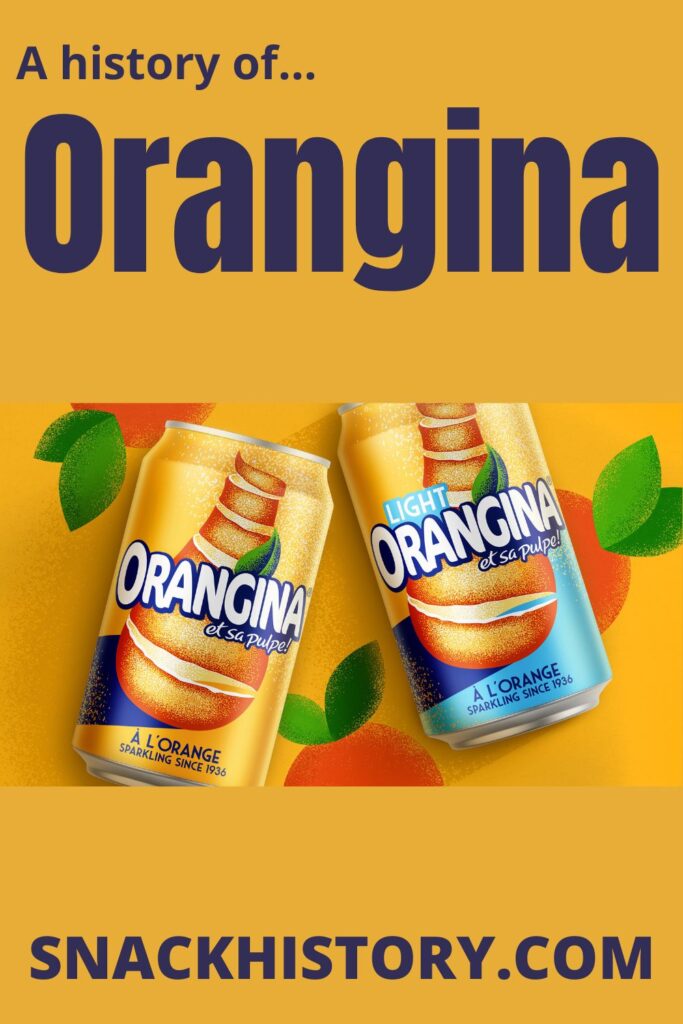
History
The company Orangina is a French company that makes a carbonated orange drink. It’s not carbonated like soda, but rather just lightly carbonated to give it that little bit of oomph and make it magical.
The drink is meant to taste like orange, but it does have a combination of citrus juices in it. Orange is the highest level, but mandarin, grapefruit, and lemon are also a big part of the product. This drink is certainly not new. In fact, it was originally created back in 1933, so it’s about 90 years old now.
The creator was Augustin Trigo Mirallès, who was from French Algeria. Now, it’s popular heavily in Europe, but is available in other countries such as North Africa, Japan, and even North America as well.
Augustine was a chemist who created this drink. And while he created it in 1933, he didn’t actually present it to the world until 1936. Orangina made its debut at the Marseille Trade Fair. The name at the time was actually Naranjina, and it was later changed to TriNaranjus. Those names still hold in their relative markets, but most of the world knows of this drink as Orangina.
The initial introduction of the drink unfortunately coincided with events of World War II, as well as some other major conflicts. Because of those things, this drink was set aside for a while, right after Leon Beton had purchased the recipe to market it more.
It remained stagnant for a bit because of the world happenings, but it didn’t end there. Leon’s son Jean-Claude Beton took over and went back to work making the drink a success in 1947. He took the original recipe and modified it just slightly in an effort to make it slightly more marketable. He kept the basis and changed only a couple small details.
Then, Jean-Claude went to work sharing Orangina with the world using the updated recipe, hitting North Africa and Europe the hardest. It took off quickly and became one of the most popular beverages in North African almost right away.
Now, Orangina is known for the glass bottle it comes in. And it’s not just any glass bottle. It has a signature design and shape. Every bottle of Orangina comes this way. That design first was introduced in 1951 by Jean-Claude, and now it’s a major calling card for the brand as a whole. The bottom of the glass bottle is rounded to resemble an orange, and it’s even texturized to feel like an orange as well. It’s incredibly unique and innovative.
In 1962, they moved production to a facility in France. This proved to be a great move for them too. In 1978, they introduced Orangina to the US. They first represented it under a completely different name (Orelia) but then later changed back to Orangina.
In 1984, Orangina became part of the Pernod Richard Group.
In 2000, ownership changed hands and was acquired by Cadbury Schweppes. At that time, Cadbury acquired all of the soda brands that fell under the Pernod Richard group. However, soda was never really the concept that Cadbury wanted to focus on. In 2006, they decided to maintain their chocolate focus and started splitting up parts of their soda holdings to sell off.
Ownership moved to different parts of the country and was split up. The reason for the need to split was because Orangina was the third largest producer in the world so PepsiCo and Coca Cola simply couldn’t acquire it at the time.
The majority holdings for everything except North America production fell under a shared holding with Blackstone Group and Lion Capital LLP. The brand was known as Orangina Schweppes at that time. That didn’t last very long though, and Suntory purchased Orangina in 2009. That is where ownership outside of the US remains today.
For North America, it was slightly different. The ownership was purchased by Dr Pepper Snapple, which is now Keurig Dr. Pepper. Even after the change of ownership, it remained under their holdings. For a while, it was produced and manufactured by Motts, but even Motts is now held by Keurig Dr. Pepper.
While North America’s ventures originally remained separate from the rest of the world, they have since come together and Suntory owns the brand and production in every part of the globe.
When Was Orangina Invented?
Orangina certainly has a long history in terms of ownership, and even the time it took to get produced on a market scale. The drink was originally created back in 1933, which was 90 years ago.
However, even though it was created in 1933, it was never fully introduced or marketed until 1936. And then, World War II affected almost the entire world in some way and there wasn’t much production or marketing of it in that timeframe.
Orangina still existed then, but it was almost as if they were in a holding pattern. It wasn’t until 1947 that Orangina finally hit the ground running and production and marketing were adapted to really bring the brand forward into the world.
Who Owns Orangina?
Orangina was like a lost puppy for a lot of years. Ownership has changed probably close to 10 times for this brand, but it never left the market so that says a little something. They’ve been owned by individuals, as well as huge conglomerates and private equity companies.
At one time, there were even different owners for the North America markets as opposed to the rest of the world. It’s certainly been an active history of ownership.
Now, the entirety of Orangina is owned by Suntory. The drink is still produced and distributed in many different countries, but it remains the most popular in Europe and North Africa. It is only mildly available in parts of the United States now. Of course, it’s also widely available online so people all over the globe have that option.
Logo
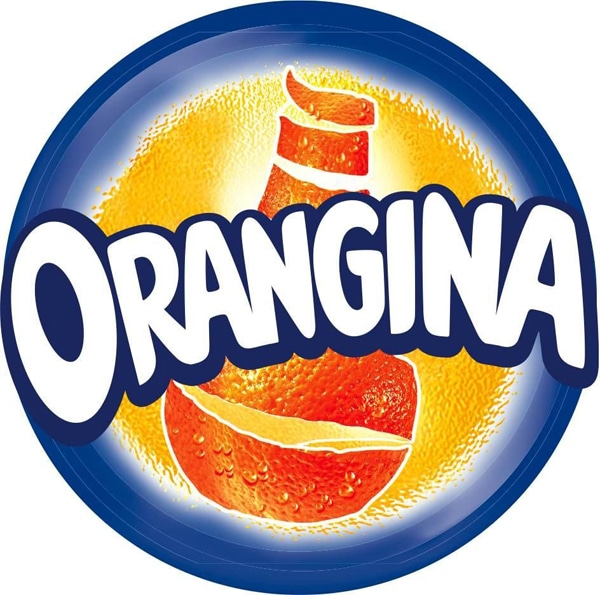
Flavors
Orangina is most known for their original flavor, which is heavily orange flavored. However, even the orange flavor has some other citrus mixed into it. Orange is simply the dominant flavor. These drinks are also mildly carbonated, so they fall into the soda category.
That being said, they really taste more like orange cocktails or orange juices, with mild carbonation added. They are also unique in that they come in glass bottles. The base of the bottle is shaped like an orange, and it is mildly textured to feel like an orange too. It’s pretty cool!
They don’t have a ton of flavors, and they never have. After all, the drink is meant to be based on orange as the flavor. No matter which flavor you get, they recommend that you gently shake up the bottle before you drink it. There is some real fruit inside so this helps to mix the orange into the drink and amplify the flavors.
These are the flavors that they offer.
- Original – Primarily orange with notes of lemon, mandarin, and grapefruit
- Red Orange – contains all the original flavors, with the addition of red oranges
- Tropical – original Orangina plus mango, pineapple, passionfruit, and apple
- Light – made with original flavors and slightly less sugar or corn syrup
Ingredients
- Carbonated Water
- Orange Juice From Concentrate
- Sugar
- Lemon Juice From Concentrate
- Orange Pulp
- Mandarin Pulp
- Mandarin Juice From Concentrate
- Grapefruit Juice From Concentrate
- Orange Peel Extract
- Natural Orange Flavors.
Nutrition
| Serving Size: | 1 bottle | % Daily Value* |
| Amount Per Serving | ||
| Calories | 170 | |
| Total Fat | 0g | 0% |
| Sodium | 20mg | 1% |
| Total Carbohydrates | 41g | 14% |
| Sugars | 40g | |
| Added Sugars | 35g | 70% |
| Protein | 0g | |
| Vitamin D | 0mcg | 0% |
| Calcium | 0mg | 0% |
| Iron | 0mg | 0% |
- The % Daily Value (DV) tells you how much a nutrient in a serving of food contributes to a daily diet. 2000 calories a day is used for general nutrition advice.
Pictures
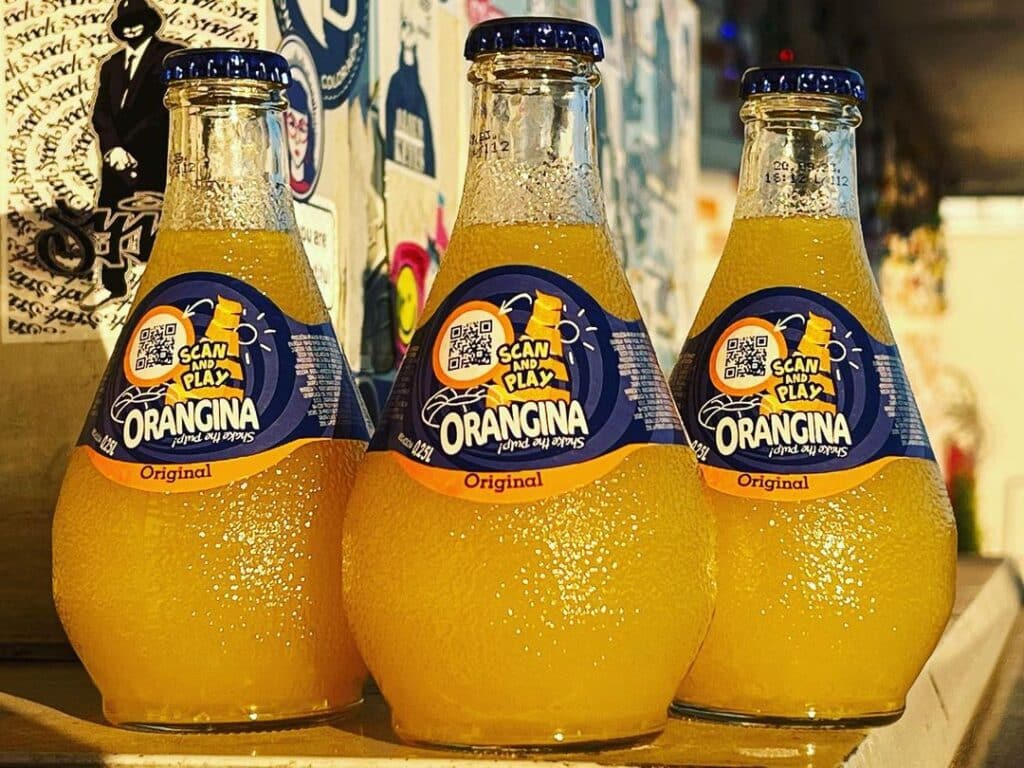
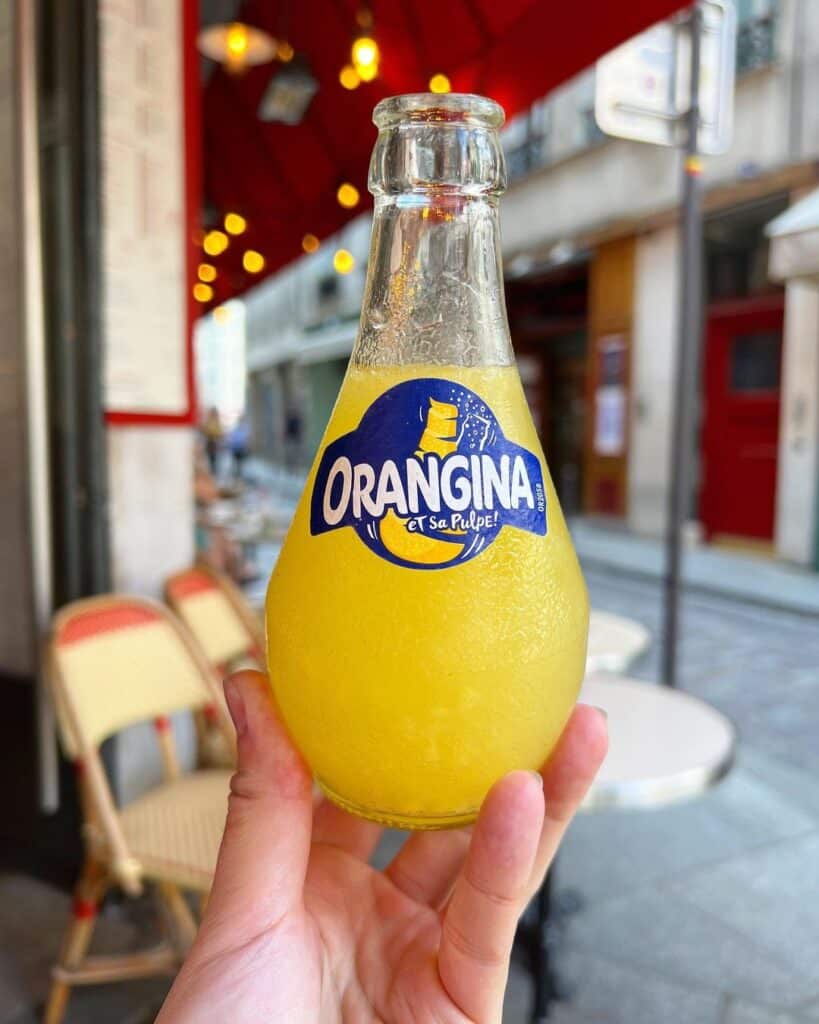
Commercials
Conclusion
Orangina certainly has a vast history all its own. It’s also incredibly unique and there has never been another drink exactly the same thanks to the zest paired with carbonation. The long history only proves that they are in the market for the long haul. Try one!

Krysta Wood is a freelance writer that loves to bring a story to life. She is a candy fanatic that likes to try different types of candy and learn more about their histories.
Please leave a review or any memories of this snack in the comments below. Thank you!
Click here for a full A-Z list of Snacks and Candy
